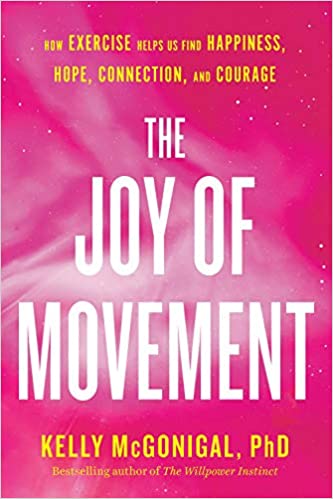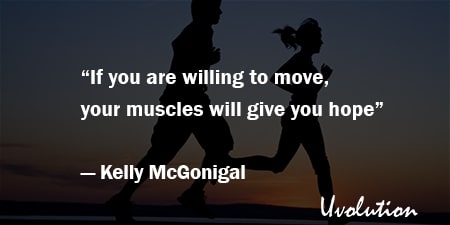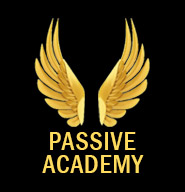The Joy of Movement by Kelly McGonigal
The Book in 1 Sentences
The Joy of Movement: How exercise helps us find happiness, hope, connection, and courage
“Around the world, people who are physically active are happier and more satisfied with their lives. This is true whether their preferred activity is walking, running, swimming, dancing, biking, playing sports, lifting weights, or practicing yoga.
People who are regularly active have a stronger sense of purpose, and they experience more gratitude, love, and hope. They feel more connected to their communities, are less likely to suffer from loneliness or become depressed. These benefits are seen throughout the lifespan.
They apply to every socioeconomic strata and appear to be culturally universal. Importantly, the psychological and social benefits of physical activity do not depend on any particular physical ability or health status. They have been demonstrated in people with chronic pain, physical disabilities, serious mental and physical illnesses, and even among patients in
hospice care.
The joys described above—from hope and meaning to belonging—are linked first and foremost to movement, not to fitness.
The question of how physical activity contributes to human happiness is the central focus of this book. I started by scouring the science, skipping the countless surveys that show that people who exercise are happier, and searching instead for studies and theories that could shed light on why.
I pored through academic papers in fields as wide-ranging as neuroscience, paleontology, and musicology. I talked to anthropologists, psychologists, and physiologists. I interviewed athletes and exercise professionals. ... I reached out to friends, family, and strangers, and asked them to share their experiences of movement.
After nearly every one of these interviews, I found myself relistening to some part of the recorded conversation. Not just to check my notes, but because I wanted to hear their stories again.
Many of the individuals I spoke with were brought to tears as they explained what movement meant to them. By the third time I found myself typing, ‘She teared up while telling me about this,’ I realized: These were tears of joy, and the joy of movement is moving.” ~ Kelly McGonigal
5 BIG Ideas
The Joy of Movement Book Summary
1. The Hope Molecules
“One of the first things I discovered is that the most common explanation of why exercise makes us happy is far too simplistic. The psychological effects of movement cannot be reduced to an endorphin rush.
Physical activity influences many other brain chemicals, including those that give you energy, alleviate worry, and help you bond with others. It reduces inflammation in the brain, which over time can protect against depression, anxiety, and loneliness.
Regular exercise also remodels the physical structure of your brain to make you more receptive to joy and social connection. These neurological changes rival those observed in the most cutting-edge treatments for both depression and addiction.
The mind-altering effects of exercise are even embedded in your musculature. During physical activity, muscles secrete hormones into your bloodstream that make your brain more resilient to stress. Scientists call them ‘hope molecules.’
Looking at the evidence, it’s hard not to conclude that our entire physiology was engineered to reward us for moving. But why would human biology be so finely tuned to encourage us to be active?
A reasonable first guess might have to do with the health benefits of exercise. Perhaps the brain is looking out for the body, making sure we stay active enough to ward off a heart attack. Yet this notion takes too brief a historical perspective on the value of physical activity to human survival.
Your doctor might encourage you to exercise to better control your blood sugar, lower your blood pressure, or reduce your risk of cancer. But for most of human existence, the central
purpose of movement was not to prevent disease. Physical activity was how we engaged with life.
As neuroscientist Daniel Wolpert writes, ‘The entire purpose of the human brain is to produce movement. Movement is the only way we have of interacting with the world.’ This is why our biology includes so many ways to reward moving.
At the most fundamental level, rewarding movement is how your brain and body encourage you to participate in life. If you are willing to move, your muscles will give you hope. Your brain will orchestrate pleasure. And your entire physiology will adjust to help you find the energy, purpose, and courage to keep going.”
John Ratey - in his book Spark - also tells us: “I tell people that going for a run is like taking a little bit of Prozac and a little bit of Ritalin because, like the drugs, exercise elevates these neurotransmitters. It’s a handy metaphor to get the point across, but the deeper explanation is that exercise balances neurotransmitters — along with the rest of the neurochemicals in the brain. And as you’ll see, keeping your brain in balance can change your life.”
2. The Natural Antidepressant
“In the United States, daily physical activity—as captured by an accelerometer—is correlated with a sense of purpose in life. Real-time tracking also shows that people are happier during
moments when they are physically active than when they are sedentary. And on days when people are more active than their usual, they report greater satisfaction with their lives.
Other experiments in the U.S. and UK have forced moderately active adults to become sedentary for a period of time, only to watch their well-being wither. Regular exercisers who replace physical activity with a sedentary activity for two weeks become more anxious, tired, and hostile.
When adults are randomly assigned to reduce their daily step count, 88 percent become more
depressed. Within one week of becoming more sedentary, they report a 31 percent decline in life satisfaction.
The average daily step count required to induce feelings of anxiety and depression and decrease satisfaction with life is 5,649. The typical American takes 4,774 steps per day. Across the globe, the average is 4,961.”
“Anything that keeps you moving and increases your heart rate is enough to trigger nature’s reward for not giving up. There’s no objective measure of performance you must achieve, no pace or distance you need to reach, that determines whether you experience an exercise-induced euphoria.
You just have to do something that is moderately difficult for you and stick with it for at least twenty minutes. That’s because the runner’s high isn’t a running high. It’s a persistence high.”
“On a typical day, the Hadza engage in two hours of moderate to vigorous activity, like running, and several more hours of light activity, like walking. There is no difference in activity level between men and women or between young and old.
If anything, the Hadza become more active as they age. Contrast this to the United States, where the average adult engages in less than ten minutes of moderate to vigorous activity a day, and physical activity peaks at age six. If the Hadza lifestyle reflects what human bodies are adapted for, something has gone seriously awry for the rest of us.”
“A meta-analysis of twenty-five randomized clinical trials concluded that exercise has a large and significant antidepressant effect among people diagnosed with major depressive disorder.”
“One study tracked the daily movements and mood of over 20,000 adults, using the GPS on their smartphones. After collecting over a million data points, the researchers concluded that people are happier in natural environments. And yet typical Americans spend 93 percent of their time indoors, creating what some call a nature deficit.”
3. The joy of moving together
“The feeling [she] describes is not reserved for rowing. It can be experienced anytime and anywhere people gather to move in unison: in marches or parades, at dance classes and nightclubs, while jumping rope on the sidewalk or practicing tai chi in the park, or when swaying and singing at church.
In 1912, French sociologist Emile Durkheim coined the term collective effervescence to describe the euphoric self-transcendence individuals feel when they move together in ritual, prayer, or work.
Durkheim believed that these activities help individuals feel connected to one another and to something bigger than themselves. We crave this feeling of connection, and synchronized movement is one of the most powerful ways to experience it.
The joy of collective effervescence helps explain why fitness friendships and sports teams feel like family; why social movements that include physical movement inspire greater solidarity and hope; and why individuals feel empowered when they join others to walk, run, or ride for a cure.
As with the runner’s high, our capacity for collective effervescence is rooted in our need to cooperate to survive. The neurochemistry that makes moving in unison euphoric also bonds strangers and builds trust.
This is why moving together is one of the ways humans come together. Collective action reminds us that we are part of, and moving in community reminds us where we belong.”
“Their experiences paint a portrait of how humans maintain hope and momentum in the darkest moments. We endure by taking it one step at a time, by making space for suffering and joy to coexist, and with the help of others.”
4. How We Endure .. Together
“One of the most celebrated moments of Olympic history took place at the 1992 games in Barcelona, when British runner and world-record holder Derek Redmond finished the 400-meter semifinals dead last.
An injury had kept him from competing in the 1988 games in Seoul, and Barcelona was widely considered his opportunity to medal. If you watch a video of the event, here’s what you’ll see:
Redmond starts strong, but fifteen seconds into the race, he clutches his right leg and slows to a hop. Two seconds later, he collapses onto the track. His first thought, he later explained, was that he had been shot in the back of his thigh. In reality, the violent pain was his hamstring muscle snapping off the bone.
By the time Redmond is able to stand back up, every one of his competitors has crossed the
finish line. The race is over. Yet Redmond refuses to quit.”
5. Overcoming Obstacles
“So much of the language we use to describe courage relies on metaphors of the body. We overcome obstacles, break through barriers, and walk through fire. We carry burdens, reach
out for help, and lift one another up. This is how we humans talk about bravery and resilience.
When we are faced with adversity or doubting our own strength, it can help to feel these actions in our bodies. Sometimes we need to climb an actual hill, pull ourselves up, or work together to shoulder a heavy load to know that these traits are part of us. The mind instinctively makes sense out of physical actions.
When you embrace the metaphorical meaning of movements, you can literally sense the strength that is in you and the support that is available to you. Human beings are also storytellers, and the stories we choose to tell shape how we think about ourselves and our world.
One of the most powerful ways that movement can affect us is through its ability to change our most deeply held stories. Whether it’s by plunging into a pool of muddy water, learning how to hold a headstand, or lifting more weight than you ever thought possible, physical accomplishments can change how you think about yourself and what you are capable
of.
Do not underestimate how significant such a breakthrough can be. When Araliya Ming
Senerat was in her early twenties, she was depressed, living in a city far away from her family
and friends, and unhappy at work. She made a plan to take her own life.
The day she intended to go through with it, she went to the gym for one last workout. She deadlifted 185 pounds, a personal best. When she put the bar down, she realized that she didn’t want to die. Instead, she remembers, ‘I wanted to see how strong I could become.’ Five years later, she can now deadlift 300 pounds.”
“In The Lure of Long Distances, Robin Harvie notes that the word athlete derives from a Greek word for ‘I struggle, I suffer.’”
That was my QUICK summary of the great book The Joy of Movement by Kelly McGonigal. If you’re interested, get your copy. There is a HUGE amount of life-changing ideas in this book, and we’ve only touched on a tiny bit of it.
Buy The Book: The Joy of Movement by Kelly McGonigal

GET Blinkist 7 Days FREE Trial
3000+ Book Summaries
(Audio and Text)








